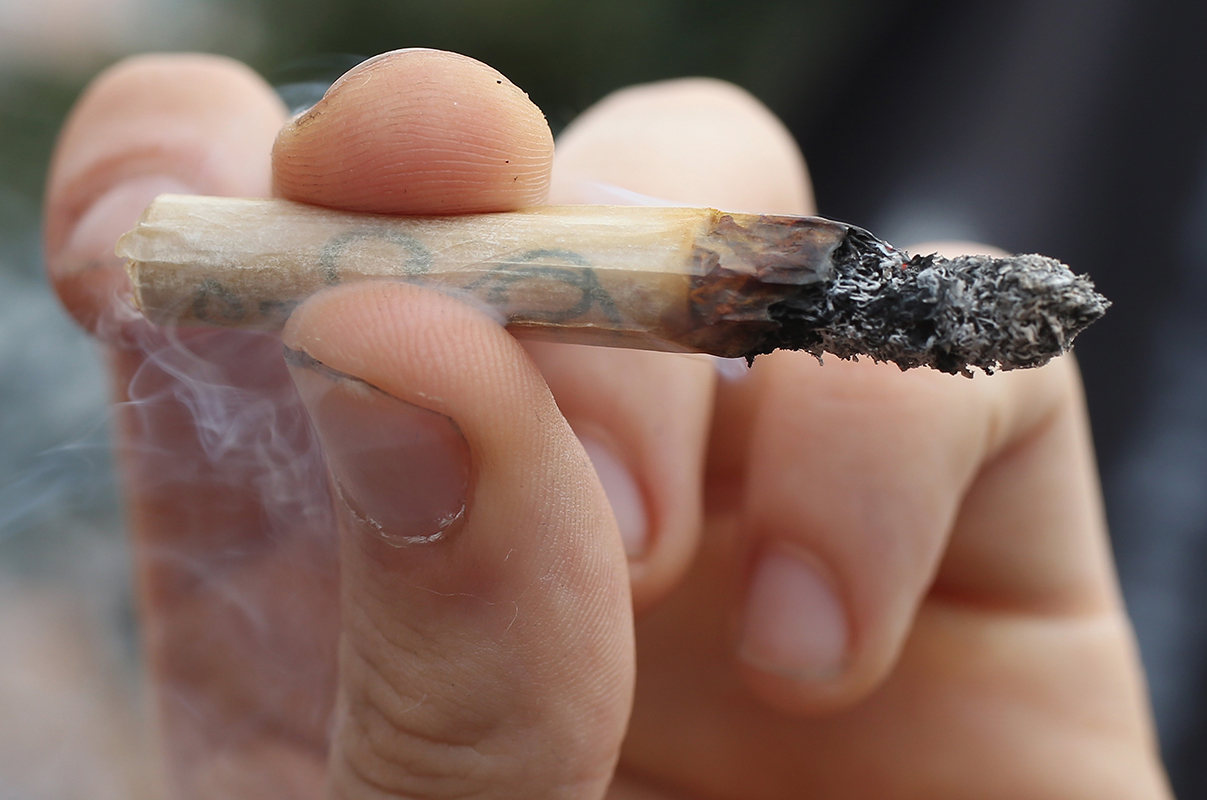Teen Brain on Pot: New Study Examines First Exposures

The chemical tetrahydrocannabinol (THC) in marijuana is known to trigger responses in brain regions related to thinking, perception, coordination and memory, and to have a lasting impact on users when taken frequently over time.
But much less is known about how a growing brain responds to its first introduction to marijuana. An upcoming, long-term study, however, could shed light on the ways that marijuana and other substances and experiences affect a teenager's developing brain.
Most studies on marijuana and how it affects the brain look at chronic users, so there isn't much data on people who use the drug occasionally or only once, said Susan Weiss, director of the Division of Extramural Research at the National Institute on Drug Abuse (NIDA). Researchers at NIDA, along with researchers at the National Institute on Alcohol Abuse and Alcoholism (NIAAA) and the National Cancer Institute (NCI), are leading the study.
"We don't really know what happens to a first-time user — we don't know if one use will change the brain and make you more vulnerable to taking other drugs, for example," Weiss told Live Science. [7 Ways Marijuana May Affect the Brain]
The new study, called the Adolescent Brain Cognitive Development (ABCD) Study, is a collaborative investigation funded by the National Institutes of Health (NIH). It may help scientists single out the effects on brain development of substances like marijuana, Weiss explained. It could also open a window into how the maturing brain is shaped by biological factors, such as exposure to sex hormones, and by other factors, such as exercise and social pressures, said Weiss.
The developing brain
The human brain grows throughout the teenage years and even into a person's early 20s, recent studies have shown. As a developing brain forms new structures and connections, it may be especially vulnerable to disruptions, particularly those caused by exposure to certain experiences, such as drugs and alcohol.
Recent studies have found that people who used marijuana when they were young were more likely to develop a marijuana disorder when they get older — and were also more likely to develop other substance use disorders, NIDA reported.
Sign up for the Live Science daily newsletter now
Get the world’s most fascinating discoveries delivered straight to your inbox.
But it's unclear if that tendency emerged because of how marijuana affects the brain, or if marijuana use is not a causal factor but merely a red flag for a person's general risk of addiction, Weiss said. In other words, it could be that people who are more likely to try marijuana, and use it frequently, are also more likely to become dependent on substances in general.
"This is not to say that someone who starts smoking marijuana as an adult won't become addicted, but the majority of the data at this point indicates adolescence as a high-risk period for cannabis use — and particularly for regular cannabis use," she said.
Prior studies have shown that people who use marijuana often or have used it for some time show changes in the connections among their brain structures. The changes may be within the structures themselves, or in the volume of certain brain areas. This is particularly true if they used marijuana repeatedly when they were young, Weiss told Live Science.
But it's difficult to say if marijuana alone is the culprit for those brain abnormalities, she added.
"Most young people who start using marijuana when young are also using other substances, like alcohol and tobacco. We do the best we can to factor out those variables, but it's hard to disentangle those effects," Weiss explained. [Marijuana Could Treat These 5 Conditions]
A decade of observation
In the ABCD Study, researchers at 21 research centers across the U.S will follow 10,000 children, starting at age 9 or 10, over a period of 10 years. Every two years, the researchers will conduct magnetic resonance imaging (MRI) scans of the participants' brains, collect biospecimens such as saliva for genetic analysis, and evaluate the children's interview responses and performance on cognitive tests. Additional follow-ups will take place every three to six months.
By tracking the subjects' physical and behavioral trajectories over time, the study will create the first map of changes in adolescents' brains and bodies as they are shaped by both biological and social factors, ABCD said. Those factors include experimentation with tobacco, drugs and alcohol.
"We'll be looking at what is normal brain development, what sort of variability is there, what differences there are between the sexes, [and] how physical activity and substance use affect brain development," Weiss told Live Science.
"By having a very large number of participants, we hope to be able to ask a lot of these questions that right now we don't have answers to," she said.
Original article on Live Science.

Mindy Weisberger is an editor at Scholastic and a former Live Science channel editor and senior writer. She has reported on general science, covering climate change, paleontology, biology and space. Mindy studied film at Columbia University; prior to Live Science she produced, wrote and directed media for the American Museum of Natural History in New York City. Her videos about dinosaurs, astrophysics, biodiversity and evolution appear in museums and science centers worldwide, earning awards such as the CINE Golden Eagle and the Communicator Award of Excellence. Her writing has also appeared in Scientific American, The Washington Post and How It Works Magazine. Her book "Rise of the Zombie Bugs: The Surprising Science of Parasitic Mind Control" will be published in spring 2025 by Johns Hopkins University Press.










